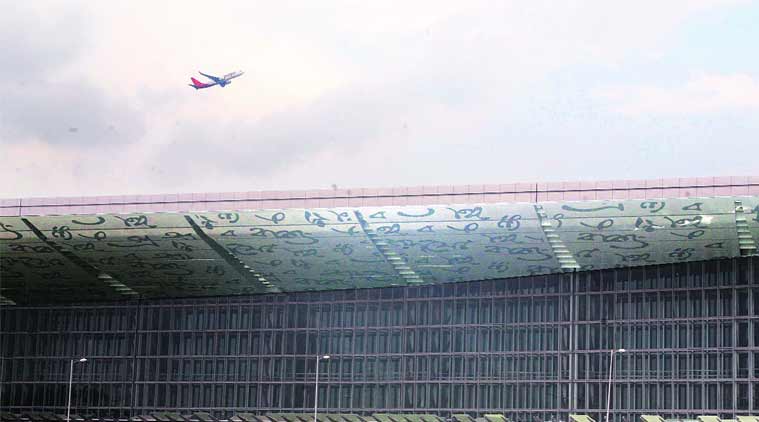Across three fund-starved infrastructure sectors, an increasingly reluctant private sector is being drafted in by the government to invest. The new terms of re-engaging the private players in sectors such as roads, power and airports aim at transferring a higher proportion of the project risk back to the government while concomitantly pruning the upfront funding requirement for the private sector.
In the roads sector, after a bitter private sector experience, the ministry of roads is looking at a halfway house that broadly insulates the private sector from traffic risk. It is targeting the award of half the 8,500 km of road development projects up for awards this financial year under the new ‘hybrid annuity’ model, under which the government would provide 40 per cent of the project cost to the developer to start work while the remaining investment will have to be made by the contractor.


“The whole objective is to get the private sector back … Since the traffic risk is not borne by the concessionaire, it gives him some comfort level to borrow from banks,” secretary, ministry of road transport and highways, Vijay Chhibber, said. Last fiscal, the government awarded 7,900 km of roads projects, of which only 700 km is to be executed under the public-private partnership mode on build, operate, transfer (BOT) basis.
When the NDA government came to power last year, work of stretches totalling 9,000 km were estimated to have been held up. Till now, 39 projects covering 4,700 km have been cancelled or letters of appointment for starting work have been withdrawn. Another 16 projects totaling around 1,360 km need fund infusion to start work.
In the aviation sector, the government has nearly halved fresh investments required to be made by private concessionaires for developing the airports at four upcoming airport privatisation projects — Chennai, Kolkata, Jaipur and Ahmedabad — over the next three to five year period. The move has been resisted by officials from the Airports Authority of India (AAI), who have
questioned the rationale for re-engaging the private sector at softer terms for revenue-earning airports such as the ones in Chennai and Kolkata.
The four airports at Chennai, Kolkata, Jaipur and Ahmedabad, identified for privatisation, are now likely to see fresh investments of Rs 1,839 crore — a decline of about 42 per cent as against the combined capital requirement of Rs 3,150 crore identified for developmental works earlier. The cut down in capital requirements has happened largely because the scope of projects specified for development by the private concessionaire has been curtailed at these airports,
Story continues below this ad
In the power sector, bidding norms for setting up of projects based on tariff-based competitive bidding such as the ultra-mega power projects (UMPPs) have been reworked after concerns cited by private power over the UPA’s design-finance-build-operate-transfer (DFBOT) model, where funding agencies are unable to secure exposure to the project. Under the DFBOT model, developers have to transfer power plants to the government after the concession period is over, a guideline opposed by lenders. The shift is back to a build, own, operate (BOO) model, where the project stays with the developer, making it easier to raise funds for the project as collateral.
This comes after dismal interest shown by private players for two UMPPs offered under the DFBOT model – the Tamil Nadu and Orissa UMPPs. For the Tamil Nadu UMPP, private companies in the fray included Adani Power, CLP India, Jindal Steel & Power, JSW Energy, Sterlite Energy and Tata Power. Of these, four bought the request for proposal document but then decided against going ahead with the bids. The Orissa UMPP saw nine interested bidders, including Adani Power, CLP India, GMR Energy, Jindal Steel and Power, JSW Energy and Sterlite Energy. During the process, though, all of the private companies pulled out, leaving just state-owned NTPC Ltd and NHPC Ltd in the fray.
The renewed efforts by the NDA government to draw in the private players comes at a time when an estimated 332 public-private partnership projects worth Rs 10.20 lakh crore are reported to be struggling to achieve financial closure while around 110 private sector projects entailing investments worth almost an equal amount are estimated to be stalled. Attempts to rekindle the investment cycle over the last 12 months by leveraging a public funding push are still elusive. The lack of movement on big-ticket projects is partially reflected in sluggish growth in bank credit, which dropped to an 18-year low in the year ended March 31.

 New terminal of the Kolkata airport. The Centre has nearly halved fresh investments to be made by private concessionaires for developing airports at Chennai, Kolkata, Jaipur and Ahmedabad. (Source: Express Photo by Partha Paul)
New terminal of the Kolkata airport. The Centre has nearly halved fresh investments to be made by private concessionaires for developing airports at Chennai, Kolkata, Jaipur and Ahmedabad. (Source: Express Photo by Partha Paul)







